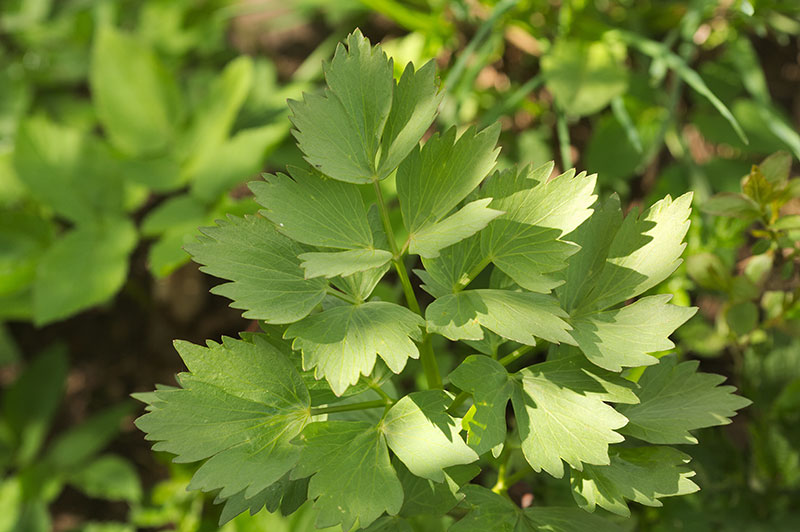Babies who are younger than 4 to 6 months do not need and should strictly not be given any type of solid foods. It is best to start introducing solid foods to your baby’s diet once they are 6 to 8 months old as by this time their digestive systems have developed enough to process the solid foods.
Rhubarb, a vegetable, contains high amounts of oxalic acid, which can be toxic in high doses. The leaves contain the highest amount of oxalic acid and should not be eaten; the stalks contain less, but certain growing conditions can affect the plant, causing the oxalic acid content in the stalks to increase to dangerous levels.
What Points Should you Remember when Introducing Rhubarb in Your Baby’s Diet?
As a parent you need to be aware of the fact that if rhubarb undergoes a hard freeze, some of the oxalic acid present in the leaves might move from the leaves into the stalk. If this happens, do not feed your baby or anyone else the rhubarb stalks.
If you don’t know if the plant has undergone a hard freeze, don’t serve the stalks to your baby. Never give your baby the rhubarb leaves, which contain the highest amount of oxalic acid. In very high doses, eating rhubarb leaves could be fatal for your baby.
The stems and roots of rhubarb contain anthraquinones, laxative substances that can cause diarrhea. If you feed rhubarb to your baby, watch for signs of loose stools. Severe diarrhea can cause dehydration in infants.
In severe, yet rare, cases oxalic acid may bind to calcium and reduce calcium absorption in your baby’s body. But as per the NYU Langone Medical Center, this side effect of rhubarb is an unlikely event. However, the oxalic acid present in rhubarb may increase the risk of your child developing kidney stones.
Oxalates bind with calcium and iron and cause these to crystalize and thus, the body cannot properly utilise the calcium and iron. It is important to note that studies show that the oxalate will only hinder the calcium or iron found in the food that itself contains the oxalate. If one eats a high calcium food such as cheese, alongside a food that contains both calcium and oxalates, then the calcium from the cheese is not negated.
Food Value of Rhubarb
Even though there are drawbacks of consuming rhubarb by children it can also be beneficial for them. It is low in calories and fiber, despite its stringiness. In the case of rhubarb, you should not eat the leaves and the stalks should bee stewed, boiled or steamed prior to serving an infant or child. A few bites of cooked, pureed rhubarb stalk mixed with other fruits in a puree will not harm your infant.
As well as being delicious in crumbles and pies, rhubarb also has lots of great health benefits that make it a good choice to be included in your baby’s diet. It can be easily included in your baby’s foods as part of desserts or included in mashes with other fruits and vegetables.
Rhubarb is one of the least calorie vegetables. Nonetheless, it holds some vital phyto-nutrients such as dietary fiber, poly-phenolic anti-oxidants, minerals, and vitamins. Further, its petioles contain no saturated fats or cholesterol.
The stalks are rich in several B-complex vitamins such as folates, riboflavin, niacin, vitamin B-6 (pyridoxine), thiamin, and pantothenic acid.
Red color stalks carry more vitamin-A than in the green varieties. Further, the stalks also contain small amounts of poly-phenolic flavonoid compounds like ß-carotene, zea xanthin, and lutein. These compounds convert into vitamin A inside the human body and deliver same protective effects of vitamin A. Vitamin A is a powerful natural anti-oxidant which is required by the body for maintaining integrity of skin and mucus membranes. It is also an essential vitamin for healthy eye-sight.
Some Ways to Give Rhubarb to Your Child
You need to remember to always cook rhubarb before serving it to your child. You can introduce rhubarb into your baby’s diet by serving it in one of the many possible ways mentioned below:
- Poach in a little water with a little vanilla extract (or bean if you prefer) for a tasty dessert
- Stew with cinnamon in a little apple juice
- Add to breakfast cereal or muesli for added texture and flavor
- Serve as a dessert with yogurt
- Traditional apple and rhubarb pie
- Crumbles
- Mashed with other fruits and vegetables (for very young children and infants)
As always, consult your pediatrician whenever you have concerns about feeding your baby. For foods such as rhubarb, it is best to ask your pediatrician his or her advise. Your baby’s pediatrician has the most thorough knowledge of your child’s health and medical history and can best advise on whether or not you can introduce rhubarb in your baby’s diet.













